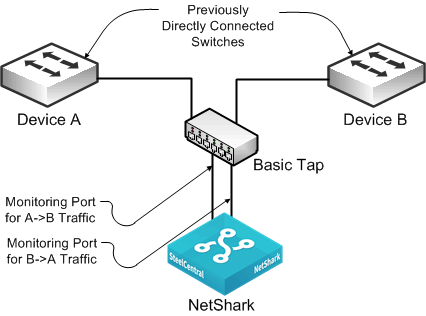Figure 4‑5 shows a TAP on a link between Device A and Device B. The TAP copies traffic in the direction from Device A to Device B on one port and the direction from Device B back to Device A on a second port.
Figure 4‑5. Basic TAP Connectivity

